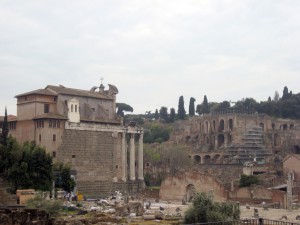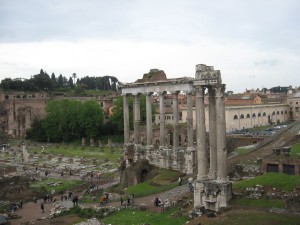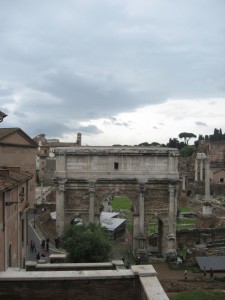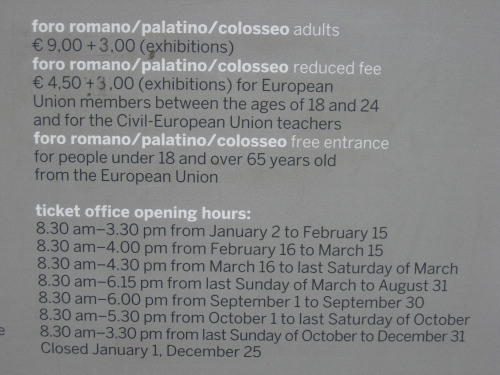 Located in a valley between Palatine Hill and Capitoline Hill, the Roman Forum is one of the foremost archaeological sites in the world. Long before the first millennium, the forum was the center of political and cultural life for the Roman Empire.
Located in a valley between Palatine Hill and Capitoline Hill, the Roman Forum is one of the foremost archaeological sites in the world. Long before the first millennium, the forum was the center of political and cultural life for the Roman Empire.
In the forum, you will come across dozens of temples, arches and other structures and it was rightly called the Forum Magnum (the Great Forum) by those who had many to choose from. Built on drained marsh land, it provided a focal point for commerce, legal administration and social interaction for the citizens and rulers of Rome.
The structures fell into ruin after the Roman Empire collapsed in the early part of the 5th century AD, parts of it being used in the Middle Ages for grazing cattle. But with the re-birth called the Renaissance it was rediscovered. A long restoration effort began in the Age of Reason at the beginning of the 18th century and continues to this day.
Today, echoes of its grandeur can still be seen around the large complex of buildings.

My advice is that, to get the most out of the Roman Forum you should get a good guidebook, join a tour or an audio guide which gives you detailed explanation on what you are looking at. When the Roman Forum was free to the public, many of my visitors would just walk through it and not know what they are looking it. Yes, it’s amazing to walk through history but it’s even more fascinating to learn about them in details.
Archaeologists and others have relined its paved streets, picked away the debris of centuries and opened the forum to the public for a fee. The facility is far too large to be seen in one day, but even a small sample of what’s there is enough to give visitors a good sample of what was the glory of Rome.
Below is a quick run down of the structures that you will see in the Roman Forum.
The Temple of Venus and Roma is just one example of the massive scale at which the Romans executed their public projects. A huge temple designed and built by the Emperor Hadrian, it sits atop a plateau facing the Colosseum.
The Temple of Concord is equally impressive. Dedicated to peace, it was completed in 367 BC on the western end of the Forum. Once a repository of statues made of gold and silver, it remains a shining reminder of what the builders of Rome could accomplish.
There are many more. The Temples of Saturn, Castor and Pollux, Vespasian and several others all demonstrate the vision made real by the Roman emperors and their architects. But there are many structures besides the temples as well.
 Arches, invented and perfected by the Romans and not improved on for a thousand years, line many of the walkways. The Arch of Titus and the Arch of Septimus Severus are only two out of many outstanding examples.
Arches, invented and perfected by the Romans and not improved on for a thousand years, line many of the walkways. The Arch of Titus and the Arch of Septimus Severus are only two out of many outstanding examples.
The Rostra, from which politicians made speeches, is still in evidence. Standing beneath it one can easily be transported back to a time in many ways very similar to our own. The Lapis Niger, or Black Stone, is a shrine that shows another aspect of the endless creativity of the builders. The Via Sacra, a shrine connected to it, is yet another.
Other buildings to head for are the Temple of Antoninus and Faustina which was built in 41 AD, the Colonna di Foca, and the Santa Maria Antiqua which is the oldest church in the Forum.
No one can truly be said to have seen Rome until they’ve spent at least a day wandering around the grounds of the Roman Forum. It may just provide a needed reminder of what can be accomplished, and how easily it may be lost.
Here are the prices and the opening hours of the Roman Forum:
 BrowsingRome Blogging about my experiences and sharing my thoughts about Rome, Italy and beyond
BrowsingRome Blogging about my experiences and sharing my thoughts about Rome, Italy and beyond

2 comments
Pingback: Things to do in Rome, Italy: Eating Italy Food Tours
Pingback: The Roman Forum (Foro Romano) | Weddings in Rome | Scoop.it